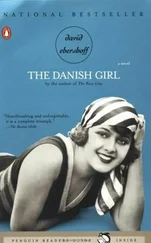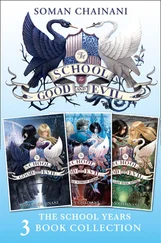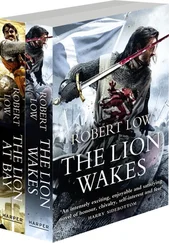Grammaticus Saxo - The Danish History, Books I-IX
Здесь есть возможность читать онлайн «Grammaticus Saxo - The Danish History, Books I-IX» — ознакомительный отрывок электронной книги совершенно бесплатно, а после прочтения отрывка купить полную версию. В некоторых случаях можно слушать аудио, скачать через торрент в формате fb2 и присутствует краткое содержание. Жанр: foreign_prose, История, Старинная литература, foreign_edu, foreign_antique, на английском языке. Описание произведения, (предисловие) а так же отзывы посетителей доступны на портале библиотеки ЛибКат.
- Название:The Danish History, Books I-IX
- Автор:
- Жанр:
- Год:неизвестен
- ISBN:нет данных
- Рейтинг книги:4 / 5. Голосов: 1
-
Избранное:Добавить в избранное
- Отзывы:
-
Ваша оценка:
- 80
- 1
- 2
- 3
- 4
- 5
The Danish History, Books I-IX: краткое содержание, описание и аннотация
Предлагаем к чтению аннотацию, описание, краткое содержание или предисловие (зависит от того, что написал сам автор книги «The Danish History, Books I-IX»). Если вы не нашли необходимую информацию о книге — напишите в комментариях, мы постараемся отыскать её.
The Danish History, Books I-IX — читать онлайн ознакомительный отрывок
Ниже представлен текст книги, разбитый по страницам. Система сохранения места последней прочитанной страницы, позволяет с удобством читать онлайн бесплатно книгу «The Danish History, Books I-IX», без необходимости каждый раз заново искать на чём Вы остановились. Поставьте закладку, и сможете в любой момент перейти на страницу, на которой закончили чтение.
Интервал:
Закладка:
GODEFRIDUS-GOTRIC is credited with a third Saxon tribute, a heriot of 100 snow-white horses payable to each Danish king at his succession, and by each Saxon chief on his accession: a statement that, recalling sacred snow-white horses kept in North Germany of yore makes one wish for fuller information. But Godefridus also exacted from the Swedes the "Ref-gild", or Fox-money; for the slaying of his henchman Ref, twelve pieces of gold from each man of rank, one from every commoner. And his Friesland tribute is stranger still, nor is it easy to understand from Saxo's account. There was a long hall built, 240 feet, and divided up into twelve "chases" of 20 feet each (probably square). There was a shield set up at one end, and the taxpayers hurled their money at it; if it struck so as to sound, it was good; if not, it was forfeit, but not reckoned in the receipt. This (a popular version, it may be, of some early system of treasury test) was abolished, so the story goes, by Charles the Great.
RAGNAR'S exaction from Daxo, his son's slayer, was a yearly tribute brought by himself and twelve of his elders barefoot, resembling in part such submissions as occur in the Angevin family history, the case of the Calais burgesses, and of such criminals as the Corporation of Oxford, whose penance was only finally renounced by the local patriots in our own day.
WAR
"Weapons".—The sword is the weapon par excellence in Saxo's narrative, and he names several by name, famous old blades like our royal Curtana, which some believed was once Tristrem's, and that sword of Carlus, whose fortunes are recorded in Irish annals. Such are "Snyrtir", Bearce's sword; "Hothing", Agnar's blade; "Lauf", or "Leaf", Bearce's sword; "Screp", Wermund's sword, long buried and much rust-eaten, but sharp and trusty, and known by its whistle; Miming's sword ("Mistletoe"), which slew Balder. Wainhead's curved blade seems to be a halbert; "Lyusing" and "Hwiting", Ragnald of Norway's swords; "Logthe", the sword of Ole Siward's son.
The "war-club" occurs pretty frequently. But it is usually introduced as a special weapon of a special hero, who fashions a gold-headed club to slay one that steel cannot touch, or who tears up a tree, like the Spanish knight in the ballad, or who uses a club to counteract spells that blunt steel. The bat-shapen archaic rudder of a ship is used as a club in the story of the Sons of Arngrim.
The "spear" plays no particular part in Saxo: even Woden's spear Gungne is not prominent.
"Bows and arrows" are not often spoken of, but archer heroes, such as Toki, Ane Bow-swayer, and Orwar-Odd, are known. Slings and stones are used.
The shield, of all defensive armour, is far the most prominent. They were often painted with devices, such as Hamlet's shield, Hildiger's Swedish shield. Dr. Vigfusson has shown the importance of these painted shields in the poetic history of the Scandinavians.
A red shield is a signal of peace. Shields are set round ramparts on land as round ships at sea.
"Mail-coats" are worn. Frode has one charmed against steel. Hother has another; a mail-coat of proof is mentioned and their iron meshes are spoken of.
"Helmets" are used, but not so carefully described as in "Beowulf's Lay"; crested helmets and a gilded helmet occur in Bearca-mal and in another poem.
"Banners" serve as rallying points in the battle and on the march. The Huns' banners are spoken of in the classic passage for the description of a huge host invading a country. Bearcamal talks of golden banners.
"Horns" 1 1 A horn and a tusk of great size are described as things of price, and great uroch's horns are mentioned in Thorkill's Second Journey. Horns were used for feast as well as fray.
were blown pp at the beginning of the engagement and for signalling. The gathering of the host was made by delivery of a wooden arrow painted to look like iron.
"Tactics".—The hand-to-hand fight of the wager of battle with sword and shield, and the fighting in ranks and the wedge-column at close quarters, show that the close infantry combat was the main event of the battle. The preliminary hurling of stones, and shooting of arrows, and slinging of pebbles, were harassing and annoying, but seldom sufficiently important to affect the result of the main engagement.
Men ride to battle, but fight on foot; occasionally an aged king is car-borne to the fray, and once the car, whether by Saxo's adorning hand, or by tradition, is scythe-armed.
The gathered host is numbered, once, where, as with Xerxes, counting was too difficult, by making each man as he passed put a pebble in a pile (which piles survive to mark the huge size of Frode's army). This is, of course, a folktale, explaining the pebble-hills and illustrating the belief in Frode's power; but armies were mustered by such expedients of old. Burton tells of an African army each man of whom presented an egg, as a token of his presence and a means of taking the number of the host.
We hear of men marching in light order without even scabbards, and getting over the ice in socks.
The war equipment and habits of the Irish, light armoured, clipped at back of head, hurling the javelin backwards in their feigned flight; of the Slavs, small blue targets and long swords; of the Finns, with their darts and skees, are given.
Watches are kept, and it is noted that "uht", the early watch after midnight, is the worst to be attacked in (the duke's two-o'clock-in-the-morning courage being needed, and the darkness and cold helping the enemy).
Spies were, of course, slain if discovered. But we have instances of kings and heroes getting into foeman's camps in disguise (cf. stories of Alfred and Anlaf).
The order of battle of Bravalla fight is given, and the ideal array of a host. To Woden is ascribed the device of the boar's head, hamalt fylking (the swine-head array of Manu's Indian kings), the terrible column with wedge head which could cleave the stoutest line.
The host of Ring has men from Wener, Wermland, Gotaelf, Thotn, Wick, Thelemark, Throndham, Sogn, Firths, Fialer, Iceland; Sweden, Gislamark, Sigtun, Upsala, Pannonia.
The host of Harold had men from Iceland, the Danish provinces, Frisia, Lifland; Slavs, and men from Jom, Aland, and Sleswick.
The battle of Bravalla is said to have been won by the Gotland archers and the men of Throndham, and the Dales. The death of Harald by treachery completed the defeat, which began when Ubbe fell (after he had broken the enemy's van) riddled with arrows.
The defeated, unless they could fly, got little quarter. One-fifth only of the population of a province are said to have survived an invasion. After sea-battles (always necessarily more deadly) the corpses choke the harbours. Seventy sea-kings are swept away in one sea-fight. Heads seem to have been taken in some cases, but not as a regular Teutonic usage, and the practice, from its being attributed to ghosts and aliens, must have already been considered savage by Saxo, and probably by his informants and authorities.
Prisoners were slaves; they might be killed, put to cruel death, outraged, used as slaves, but the feeling in favour of mercy was growing, and the cruelty of Eormenric, who used tortures to his prisoners, of Rothe, who stripped his captives, and of Fro, who sent captive ladies to a brothel in insult, is regarded with dislike.
Wounds were looked on as honourable, but they must be in front or honourably got. A man who was shot through the buttocks, or wounded in the back, was laughed at and disgraced. We hear of a mother helping her wounded son out of battle.
That much of human interest centered round war is evident by the mass of tradition that surrounds the subject in Saxo, both in its public and private aspects. Quaint is the analysis of the four kinds of warriors: (a) The Veterans, or Doughty, who kill foes and spare flyers; (b) the Young men who kill foes and flyers too; (c) the well-to-do, landed, and propertied men of the main levy, who neither fight for fear nor fly for shame; (d) the worthless, last to fight and first to fly; and curious are the remarks about married and unmarried troops, a matter which Chaka pondered over in later days. Homeric speeches precede the fight.
Читать дальшеИнтервал:
Закладка:
Похожие книги на «The Danish History, Books I-IX»
Представляем Вашему вниманию похожие книги на «The Danish History, Books I-IX» списком для выбора. Мы отобрали схожую по названию и смыслу литературу в надежде предоставить читателям больше вариантов отыскать новые, интересные, ещё непрочитанные произведения.
Обсуждение, отзывы о книге «The Danish History, Books I-IX» и просто собственные мнения читателей. Оставьте ваши комментарии, напишите, что Вы думаете о произведении, его смысле или главных героях. Укажите что конкретно понравилось, а что нет, и почему Вы так считаете.












